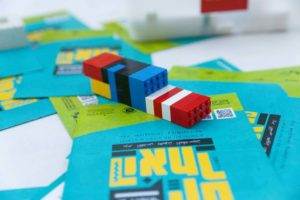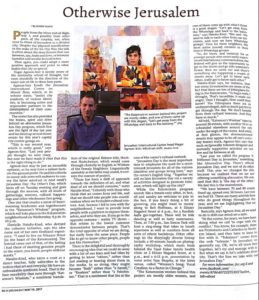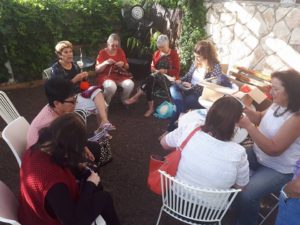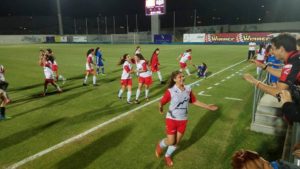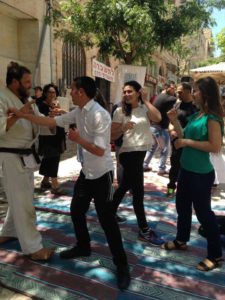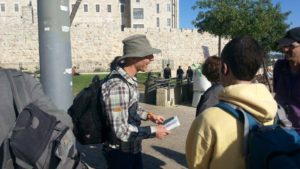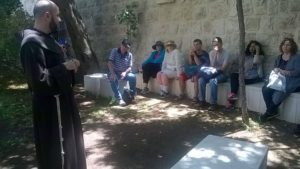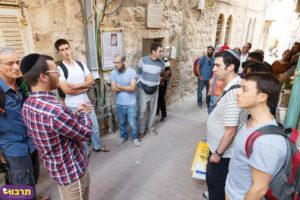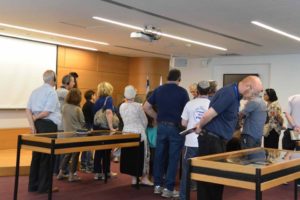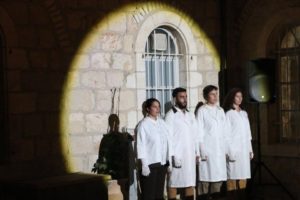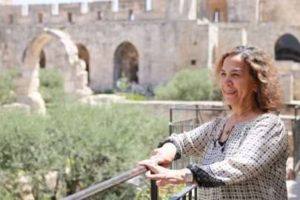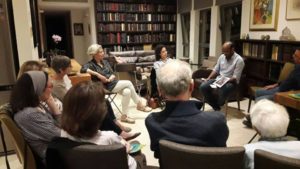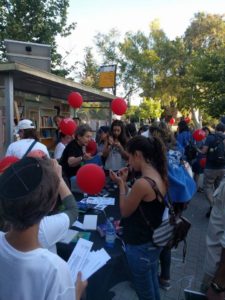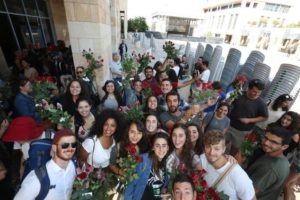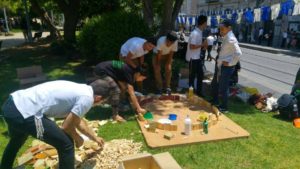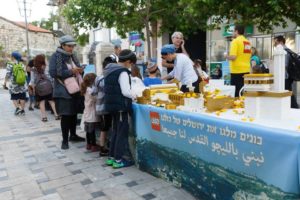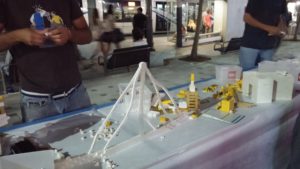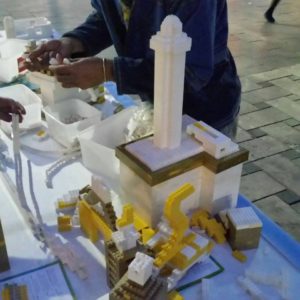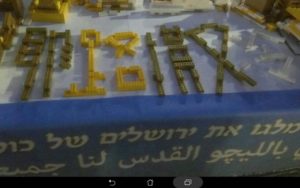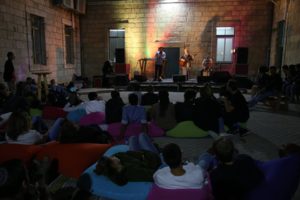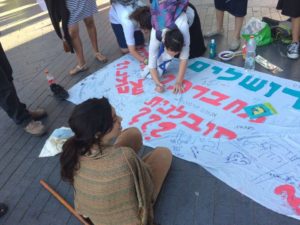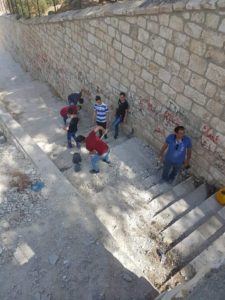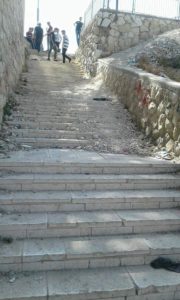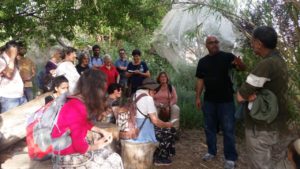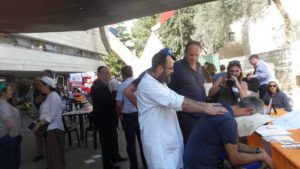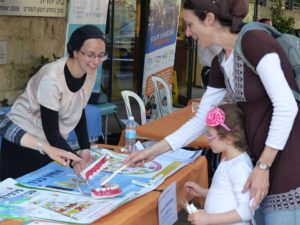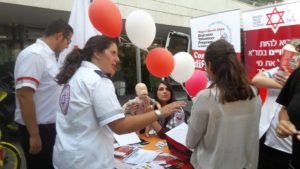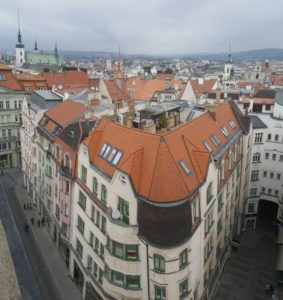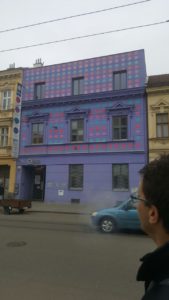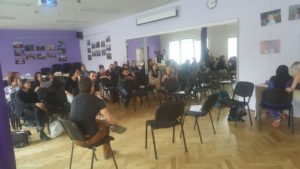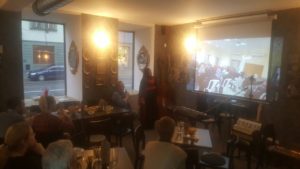Jerusalemite Day – Connecting Us To One Another / Celebrating the Diversity of the City
Jerusalem Day, the 28th of the Hebrew month of Iyar. That day in 1967 that the Israel Defense Forces captured the Old City. Some called it “reunification.” Others called in “occupation.” In all cases, it is etched in the hearts and minds of millions around the world.
For many years thousands descended upon Jerusalem on the 28th of Iyar in celebration of an ideal. But where were the Jerusalemites in these celebrations? Many did not leave their houses. Or they left the city for the day.
Starting last year, we, together with hundreds of activists and tens of thousands of Jerusalem residents, began to re-claim Jerusalem Day, with a true celebration of Jerusalem and its residents, of every race, ethnic group, religion and community. Our vision sought to create a day to celebrate Jerusalem – of Jerusalemites, by Jerusalemites and for Jerusalemites. Last year, 50 initiatives and thousands of people showed us that such an initiative was answering a real need in many residents hearts and minds. We had started a tradition in one single year. There was already talk of “what we’re going to do next year” before the sun set on A Different Day in Jerusalem 2016.
Our Director, Dr. Hagai Agmon-Snir, talked about this in the May 19 edition of the Jerusalem Post’s In Jerusalem section:
“This is our second year, which is really great. Last year people thought we were crazy, but now we have made it clear that it is the right thing to do.”
You can download a .pdf version here.
And then we we came to 2017. This year we called the day, Jerusalemite Day of Diversity.
Here’s a 2-minute video about some of the day’s 80 events:
Here’s a version in Hebrew/Arabic as well. There is also a dedicated web site with all the events, and here’s a complete list of the events in English.
This year was even more complicated than last, being 50 years since the 1967 war. One of the most often-used phrases this year has been: “ירושלים – עיר שחוברה לה יחדיו – Jerusalem – A city that has been joined together” – (Psalms 122: 3)
Many use this phrase in the political sense, describing the reunification of Jerusalem. This year, we emphasized a different, non-political reading of the Hebrew verb, לחבר – lechaber, which encapsulates in one word our vision for Jerusalemite Day of Diversity.
In addition to ‘join together,’ lechaber also means ‘to connect.’ This is exactly what we are trying to do in Jerusalemite Day of Diversity. In this Times of Israel blog post, Michal Shilor, our Coordinator for the Campaign for Grassroots Tolerance, wrote:
“we seek to connect residents to each other – neighbor to neighbor, community to community, people to people. When we connect to one another, we find common ground, argue about differences and see one another as individuals and not representatives of an entire community.”
As in most successful initiatives, Jerusalemite Day of Diversity wasn’t born in a day. In February we sent out a call for initiatives, asking residents to propose activities / initiatives / ideas for Jerusalemite Day, and in March we had our first Open Technology meeting for planning. Since then, we’ve been working with dozens and dozens of activists, helping them to plan, produce, and carry out their initiatives. Itamar Farhi, a Jerusalem storyteller who organized an evening of storytelling at the Shutaf Cooperative, noted that
What makes me love Jerusalem more than anything else is its variety and its contradictions, which are interwoven together, Arabs Haredim, secular, religious Jews, Muslims, Christians, people from all ethnicities and of all types. Together they create a special shatnes [mixture]. Sometimes it’s complicated and disheartening, but sometimes, it creates magical and special moments like yesterday [at the story telling evening].
Our job was to spark and mentor the passion of activists, spotlight and showcase their activities, and re-frame the whole to make one beautiful celebration of Jerusalem and its spectrum of residents. And the vast range of activities throughout the Day sought to do just this. You could choose from playing sports, such as soccer with Jewish and Arab girls in Hapoel Katamon’s Neighborhood League Tournament,
and martial arts on the midrachov (Ben Yehuda St. In west Jerusalem’s city center) with Mosaica,
To tours of Jerusalem’s urban centers in both East and West Jerusalem with Ir Amim,
of Mount Zion as a symbol for the complexities of Jerusalem with Window to Mount Zion,
on the seam line between Haredi and non-Haredi Jerusalem by Tarbus,
of the National Library
and of Jerusalem from the viewpoint of African refugees and asylum seekers, by members of the Jerusalem African Community Center.
You could also choose to see performances. There was Bat Hur at Beit Hansen,
Beit Alliance,
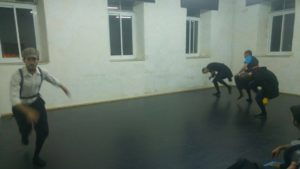
“Heroes” by religious male dance troupe, Between Heaven and Earth
the Abraham Hostel,
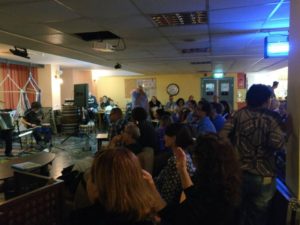
Souls (Nefashot) – Coping through Art
The Tower of David Museum of the History of Jerusalem (Click here to go to the project’s web site),
Wandering Around the House, on roofs in the Old City
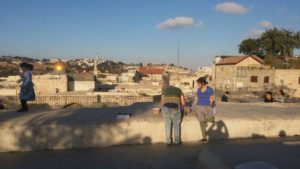
Wandering around the House, short play in which a Palestinian man and a Jewish woman choose to take an open place and claim it as their house
at the Museum of Italian Jewry,
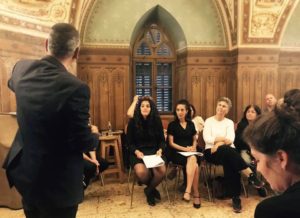
Staged Reading of ‘Everything Private,’ play based on meeting minutes of the Barashi synagogue’s board in Nahlaot
And the First Station.
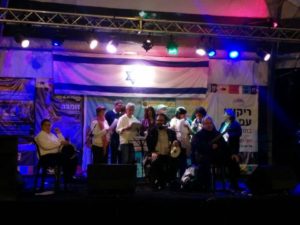
My Heart is in the East – Jerusalem in the Eyes of North African Liturgy
There was also a movie marathon at the Ma’ale School of Television, Film and the Arts.

Student films that dealt with and take place in Jerusalem, covering the entire spectrum of lifestyles
There were also a number of lectures and discussions, including discussions with Haredim, new Harediam and the formerly religious,
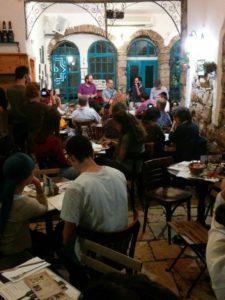
New Haredim, the Formerly Religious, and All that Cholent at the Tmol Shilshom Cafe
Israelis of Ethiopian descent, describing their sometimes arduous aliyah stories,
To discussions about Jerusalem
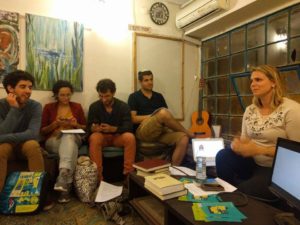
Holiness and Politics: Jerusalem of Three Religions – A panel by the Rossing Center for Education and Dialogue (Formerly JCRC)
And of course we can’t leave out the major events in the public sphere. The Jerusalemite Parade, with 3,000 marchers along the Jerusalem Railway Park, was one of the major events.
Along the way, marchers were invited to design cookies that represented their Jerusalem, a tolerant Jerusalem:
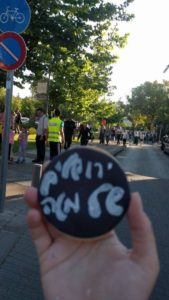
Cookie decorated with, “Everyday Jerusalem,” produced by Jerusalem Cake Design
In parallel, cookie and cake designers from all over the world were invited to design cookies for Jerusalemite Day, in an initiative called, “Let’s Bake a Difference.” Here’s an example from a decorator from Malaysia:
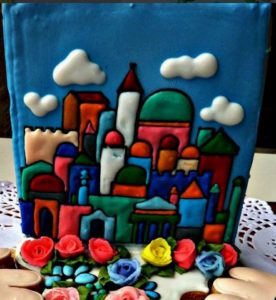
“With the support of peace, respect, hope, gratitude and loves bloom the flower of tolerance in Jerusalem,” the artist wrote
Afterward, participants were invited to take part in the Believers festival at the First Station.
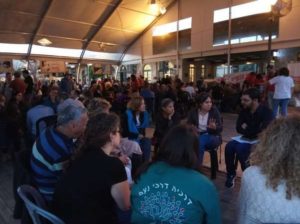
An evening of inter-religious prayer and listening circles, on listening and the Holy City, and Arab and secular and Haredi Jewish leaders.
Nearby, residents of the Katamonim neighborhood celebrated their Jerusalem-ness with workshops on knitting, kubbeh-making, songs and dances, and much more.
In town, there was of course the 200-strong Flower Parade organized by Tag Meir, that distributed flowers to the Palestinian residents of the Old City, before the Flag Parade.
At the light rail station at Safra Square, the Ruach Nachon pre-Army Preparatory Program operated the Tolerance Stop, which greeted passersby with music and activity to demonstrate the necessity of working together.
Further on down the light rail, at Davidka Square, we, together with the Citypass company (that runs the light rail) and Lego, ran a station that invited passersby to build their Jerusalem out of Lego. (There were even specially-painted gold Lego pieces to build Jerusalem of Gold!)
People built the Calatrava Bridge at the entrance to Jerusalem
A mosque
And even “Jerusalem” in Chinese! (this has been checked for accuracy with a fluent Chinese-speaker)
Nearby at the Alliance Building there were more celebrations with the Jerusalem for All of Us festival, which featured a stage for Jerusalemite performers, a panel on Jerusalem entrepreneurship, stands selling art, art installations and a poetry slam.
Close to the Ben Yehuda midrechov, Shir Ezra, working independently, wrote questions about Jerusalem on a large white sheet, such as: Is Jerusalem open? Is it tolerant? Does it represent us all? She invited passersby to write their answers, also on the sheet. She reported that many interesting discussions arose from this activity.
And in the Haredi neighborhood of Mekor Baruch, graffiti artist Salomon Souza led Haredi boys and girls in decorating the walls of their neighborhood, with a number of onlookers.
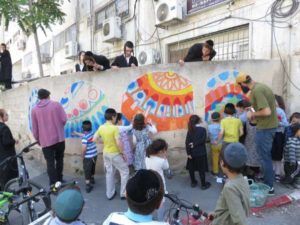
Organized by the Art Shelter Gallery that works in the area
After all those pictures, here’s the 2 minutes video again:
The event was also covered in the press. In addition to the Jerusalem Post article above, there were a number of articles in the Hebrew Israeli press before and after the event. This included a mention in the May 17 edition of the national Ha’aretz daily newspaper, in both its Internet and print versions. Here’s a picture of the print article. You can download the .PDF version here.
This article quotes JICC Director, Dr. Hagai Agmon-Snir:
The point is that Jerusalemites are saying that they want to take back the day for themselves. I’m a Jerusalemite, what does this discussion about moving the American Embassy to Jerusalem have to do with me? We don’t want to argue about whether we re-unified or occupied. We want to celebrate the diversity of the city.
On May 18, we appeared in Globes, a major national financial newspaper:
In addition, Michal Shilor was interviewed in Hebrew on the national Galei Zahal radio station on May 22, (minute 5.30).
Hagai was also interviewed (in Hebrew) on the national Educational Television station:
There were also stories in the local Hebrew-language Jerusalem news site about the Lego initiative and the wall art. In addition, Eetta Prince-Gibson wrote about us in her opinion piece for Moment magazine, “It’s Hard to Celebrate on Jerusalem Day.”
Over 80 initiatives, tens of thousands of people, celebrating Jerusalem’s diversity. Can’t wait for next year!
Many thanks to the UJA-Federation of New York and the Jerusalem Foundation for their support of this and other activities that promote tolerance throughout the year. And a huge thanks to all the organizations, initiatives, activists and participants who took part! Thank you for helping to make Jerusalem a city that represents all Jerusalemites.

